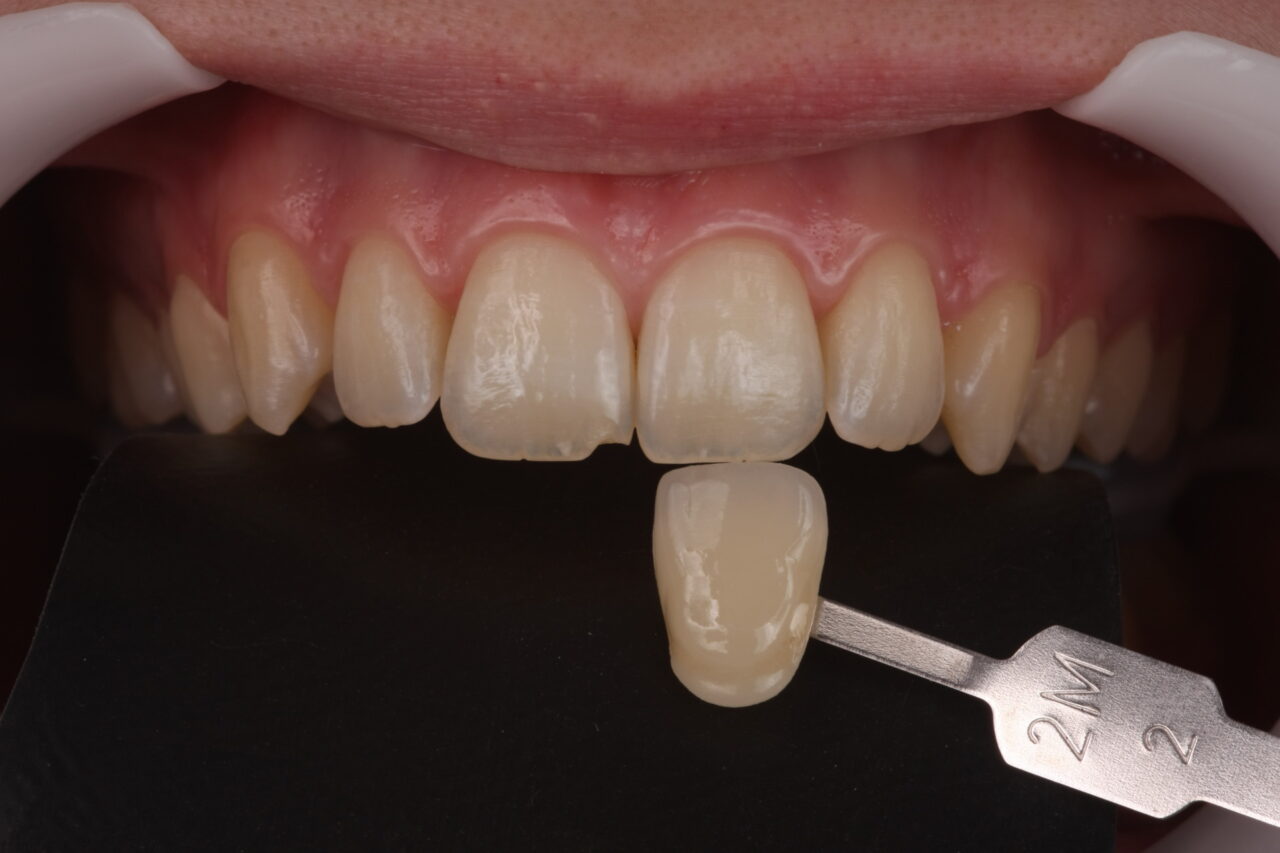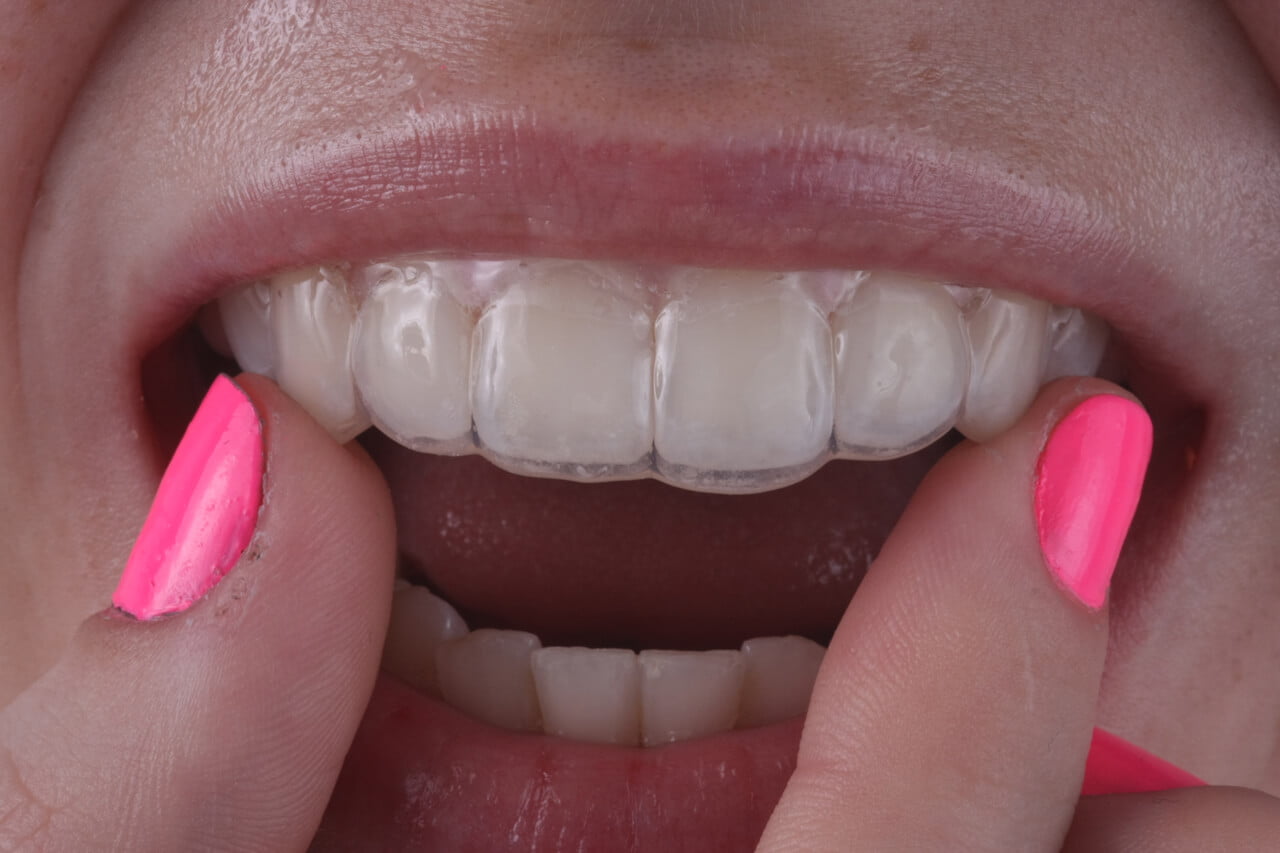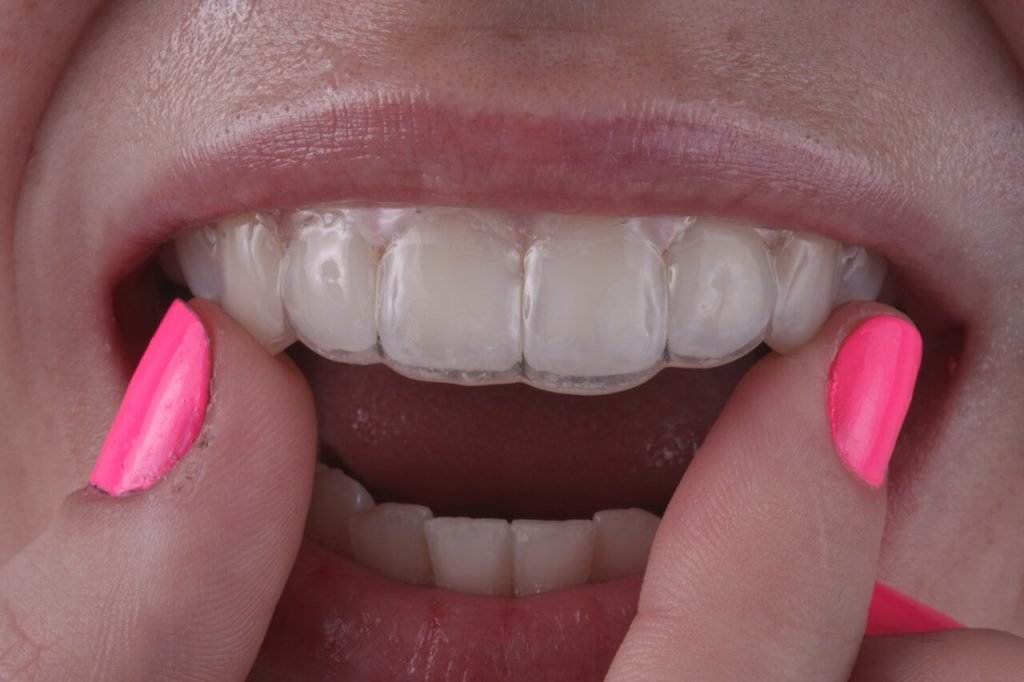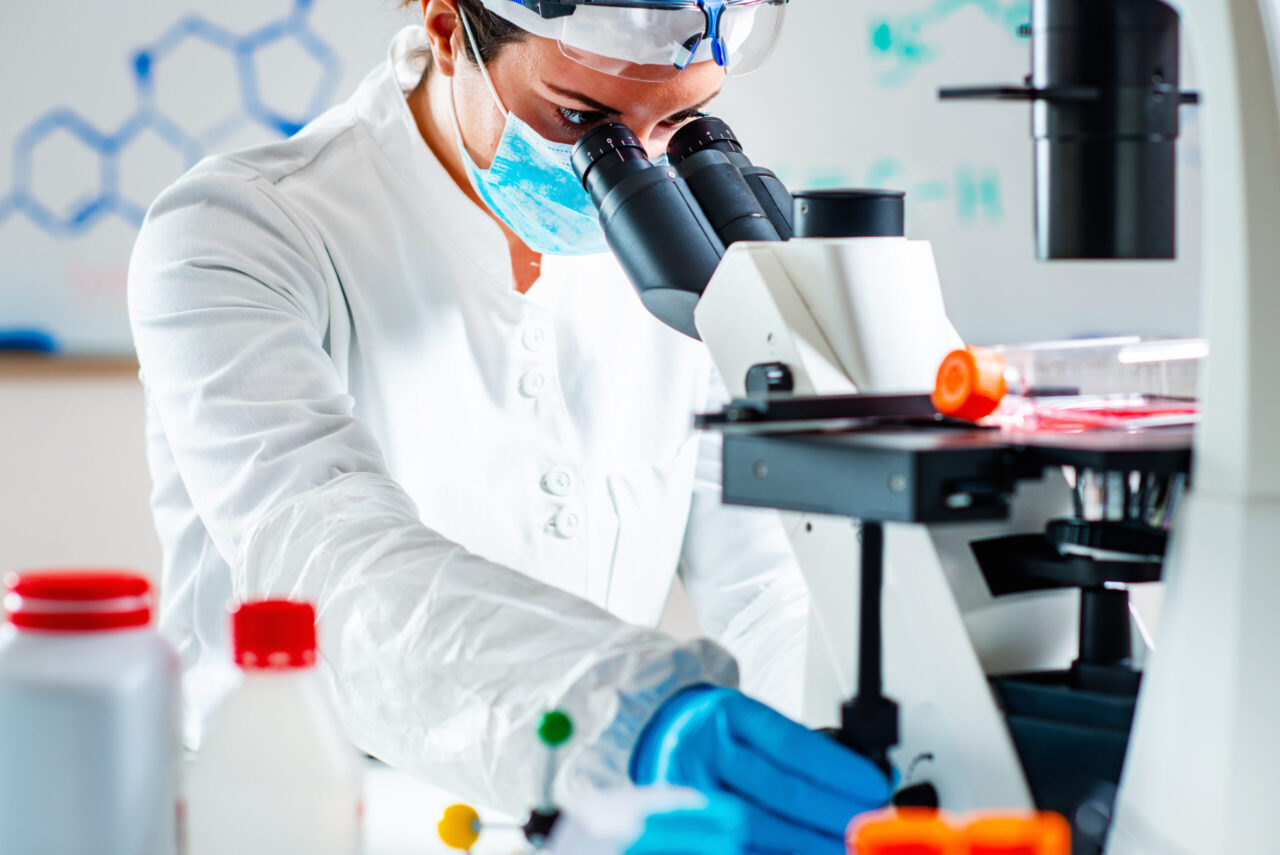

Carbamide peroxide whitening gel at 10%, 16% and 22% for supervised at-home use.

Double Desensitizing Action:
Neural action of potassium nitrate and occlusive sodium fluoride. Potassium nitrate is an effective agent in the treatment of hyperesthetic dentin. Its action is based on the fact that the increased concentration of extracellular potassium depolarizes the membranes of nerve fibers, blocking the passage of the stimulus, reducing hypersensitivity.
Excellent viscosity:
Does not run off the tray.
High Yield:
Each syringe of 3g yields up to 9 applications.
Recomended wearing time:
- 10% and 16%: 3 to 4 hours or overnight use.- 22%: 1 hour.
Whiteness Perfect is indicated for bleaching vital teeth using the technique of bleaching at home supervised by a dental surgeon.
The product bleaches teeth darkened by age and naturally dark or yellow, and teeth stained by external pigments, such as coffee, tobacco, tea, etc.
Kit 22%
4 syringes with 3g of gel each
4 applicator tips
2 vinyl plates of 1mm for tray preparation
1 tray case.
Mini kit 10% and 16%
3 syringes with 3g of gel each
3 applicator tips
Kit 10% and 16%
5 syringes with 3g of gel each
5 applicator tips
2 vinyl plates of 1mm for tray preparation
1 tray case
Individual syringe
1 syringe with 3g of gel, packaged individually.

![moldagem[1]](https://srv01.fgmdentalgroup.com/wp-content/uploads/2022/11/moldagem1-2.jpg)
![foto-3-1-1_1[1]](https://srv01.fgmdentalgroup.com/wp-content/uploads/2022/11/foto-3-1-1_11-2.jpg)
![foto-4-1-1[1]](https://srv01.fgmdentalgroup.com/wp-content/uploads/2022/11/foto-4-1-11-2.jpg)
![foto-5-1[1]](https://srv01.fgmdentalgroup.com/wp-content/uploads/2022/11/foto-5-11-2.jpg)

![foto-3-1-4[1]](https://srv01.fgmdentalgroup.com/wp-content/uploads/2022/11/foto-3-1-41-2.jpg)
![foto-1-11[1]](https://srv01.fgmdentalgroup.com/wp-content/uploads/2022/11/foto-1-111-5.jpg)

![moldagem[1]](https://srv01.fgmdentalgroup.com/wp-content/uploads/2022/11/moldagem1-2-1024x706.jpg)
![foto-3-1-1_1[1]](https://srv01.fgmdentalgroup.com/wp-content/uploads/2022/11/foto-3-1-1_11-2-1024x682.jpg)
![foto-4-1-1[1]](https://srv01.fgmdentalgroup.com/wp-content/uploads/2022/11/foto-4-1-11-2-1024x787.jpg)
![foto-5-1[1]](https://srv01.fgmdentalgroup.com/wp-content/uploads/2022/11/foto-5-11-2-1024x682.jpg)

![foto-3-1-4[1]](https://srv01.fgmdentalgroup.com/wp-content/uploads/2022/11/foto-3-1-41-2-1024x661.jpg)
![foto-1-11[1]](https://srv01.fgmdentalgroup.com/wp-content/uploads/2022/11/foto-1-111-5-1024x682.jpg)
To start with, any person over 15 years of age can undergo dental whitening. It can be done at the office or at home. Both forms require the patient to be followed up closely by a professional dentist.
The minimum age to start a whitening treatment is 15. Patients that have not reached that age still have a very ample pulp chamber and a more permeable enamel, making the sensitivity effects more intense.
This answer can only be given by the professional dentist. They will know if the treatment will be effective in your case and recommend or not the whitening treatment. Besides, it is very important to pay attention to the right precautions after the treatment and, most importantly, see your dentist every six months.
The teeth have pigments in their surface and deep tissues. Those pigments come from a coloring rich diet. The whitening agent is capable of penetrating the dental structure and chemically react with those pigments, breaking them into much smaller molecules, which reflect light in a different way and may even be diffused to outside of the dental structure, causing the visual effect of whiter teeth.
The literature shows, for precaution, two absolute counterindications: pregnant/lactating women and people under the age of 15. There are other relative counterindications, or rather, conditions that have to be treated previously in order to allow for the whitening: cavities, gingivitis, ill fitted restorations, cracked teeth, gingival recession, etc.
The best product is the one that fits better to the case of each patient, to their needs and routine. FGM counts on a complete line for whitening with products for each case. For in-office whitening, we have the pioneers Whiteness HP and HP Maxx and the modern Whiteness HP Automixx and HP Blue. For at-home whitening, Whiteness Perfect and White Class bring comfort and safety for those who want to carry out the procedure from their home. For non-vital teeth, through the walking bleach technique, we count on Superendo and Perborato. It is also possible to combine two whiteners, one at the office, applied by the dentist and one for at-home, to complement the treatment. Everything has to be under a dentist’s supervision.
All our whiteners offer great levels of whitening. The product must be adequate for the case of the patient, their habits and form of application. For whitening at the office in patients with hypersensitivity, we recommend Whiteness HP Blue for containing calcium in its formula. It is re-mineralizing and counts on alkaline pH, proven to be the whitener that causes less sensitivity. Both whiteners for at-home use have desensitizers in their formulas and should be chosen according to the patient’s history. We also make the desensitizing gel that helps in the process for those who already have a history of sensitivity, avoiding it and making the process more comfortable and safer.
The at-home use gels may be carbamide-peroxide- or hydrogen-peroxide-based. The Whiteness Perfect line (carbamide peroxide) needs a longer period in contact with the teeth since the oxygen is released slowly. On the other hand, the White Class line (hydrogen peroxide) releases the oxygen faster and needs to be in contact with the teeth for shorter periods and the initial whitening speed is faster. Therefore, the home treatment takes around 2 to 3 weeks to be concluded. The gels for in-office use (can only be applied by a professional) have a greater concentration of the hydrogen peroxide (around 35%) and the sessions take around 40 minutes and an average of 2 to 3 sessions are necessary for a good result. Both treatments are equivalent and the limitations for the whitening are determined by the teeth physiology itself. Therefore, any of the techniques, at home or at the clinic, tend to reach a similar result if well carried out.
The longevity of the whitening varies from patient to patient. According to studies, the average retention duration is from 2 to 3 years.
The active ingredient of the whitener is hydrogen peroxide. The carbamide peroxide turns into hydrogen peroxide and sub-products and that reaction takes a certain time to happen. That reveals that the active ingredient will be released more slowly, and that means a longer treatment with longer use periods every day. The hydrogen peroxide gel is ready to act, no transformation needed to break the pigments.
No. Initially, there may be a slight loss of mineral content in the enamel, however, those minerals are regained in a very short time by the action of the saliva itself. The teeth will not be weaker or more susceptible to cavities in function of the use of a whitener. FGM also makes a line of whiteners that already include fluoride and calcium in their composition and prevent the temporary de-mineralization.
Sensitivity varies from patient to patient and may be related to endogenous factors, concentration and duration of the whitening procedure, technique applied or, still, all those factors together. However, a few measures may be taken to minimize the increased sensitivity. The use of desensitizers may help reduce post-whitening sensitivity.
When hypersensitivity occurs, it may present different levels according to the conditions of each patient. Normally, the higher concentrations of the whitener will cause discomfort with more frequency/intensity. However, to inhibit or minimize that side effect, FGM counts on desensitizers included in the formula or its gels and also offers specific gels for controlling the hypersensitivity, which are supplied to the patients by their dentists. It is important to clarify that the great majority of patients do not report hypersensitivity, and, for those who do, there are alternatives to minimize the undesirable effect. After whitening, the teeth will not become more sensitive, going back to how they were before the treatment.
In spite of the name, at-home dental whitening begins and is guided at the clinic and, during the whole period, the treatment must be followed up by your dentist. The technique consists basically on the molding of the dental arches of the patient for the obtainment of a silicone molding tray. That done, the patient will need to apply the whitening solution on the teeth for the recommended times.
At-home whitening offers several advantages from a lower cost to the convenience of doing the treatment at home. In spite of the success of at-home whitening treatments, it is necessary to follow exactly the recommendations of the dentist in order to obtain successful results.
It is very important for the professional to show the patient the right amount of gel to be dispensed into the tray. Generally, one drop of gel in each tooth of the molding tray is enough.
For Whiteness Perfect, 3 to 4 hours a day are ideal for the 10% and 16% concentrations. For the 22% concentration, 1 hour is enough. For White Class, 1 hour and 30 minutes per day for the 6%concentration, 1 hour for the 7.5% concentration and 30 minutes for the 10% concentration.
During a dental whitening treatment, it is normal for the patient to feel an increase in the teeth sensitivity for variations in temperature, specially to cold substances. It can be minimized with a few treatment options that your dentist may recommend. Irritations in the gum, throat, tongue or lips can happen but they are more likely when there is excess use of the gel in the molding tray. Remember, never to self-medicate.
It is recommended that the patients avoid acid beverages and foods during the treatment because those can cause an increase in the sensitivity. Foods and beverages that are strongly colored should also be avoided so that there is no compromise of the whitening process.

We provide direct links to publications from major scientific portals containing studies conducted with our products.